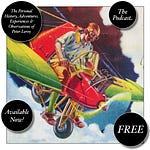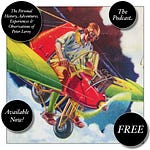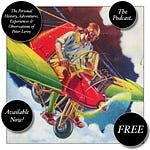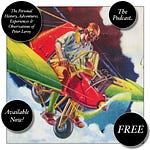2
ONE DAY I was in the cafeteria at the new junior high school, making my way along the steam table in a line with the other scholars, collecting the various components of my lunch: half a pint of milk in a waxed cardboard container shaped like a cabin in the woods; two slices of white bread; a square pat of butter on a square of white cardboard with the edges bent up to make a little tray, with a square of thin translucent waxed paper stuck to the top; one slice of roast beef as thick as a nickel, marbled like a topographic map, gray as the sheet of cardboard around which Spotless Cleaners folded my father’s Sunday shirts, with gravy; mashed potatoes, also with gravy; and those Troubled Titan peas. A woman in a hair net dished the peas out onto my plate lukewarm and wet. The pea water, gray-green like the peas themselves, spread instantly, making an island of the mashed potatoes, mingling with the gravy.
Of the many things that puzzled me about school, one was that the common sense so prized in society at large in those days never seemed to penetrate the doors of the school building. Watching the pea water and the gravy interswirl, I wondered why the divided plates that my family used on picnics were not used here in the school cafeteria, where they were really needed. Finding myself wondering along those lines, I thought of suggesting the use of divided plates to one of the ladies in the hair nets, but I decided against it, because the time that I’m recalling was a time when young people generally kept their mouths shut.
(Years later, at Hargrove College, I walked into the Student Union for my first meal and saw there a stack of circular divided trays that combined the functions of tray and plate and kept the foods and sauces apart from one another. I smiled with secret satisfaction, because I knew now, for certain, that I was in the realm of the wise. I was less certain a moment later, when, making my way along a steam table larger than but otherwise terribly like the ones I had walked along in the Babbington public schools, I was offered some of the same peas, which I had hoped to have left behind forever.)
Occupied by my thoughts, I took a seat at a table that was otherwise unoccupied and set my tray on the table. I was observing the spread of the pea water when Margot and Martha Glynn arrived and sat on either side of me, Margot on my right and Martha on my left.
“Are you right- or left-handed, Peter?” asked Margot without preamble.
“Well,” I said, “I write with my right hand but I throw a ball with my left, so you could say I’m—”
I paused slightly, because I enjoyed the word I was about to say and was proud of the skill it summarized.
“—ambidextrous.”
“That’s good. Ambidextrous is good,” said Margot.
“But those are useless skills,” said Martha.
“Yes,” said Margot. “Let me see you pat your head and rub your stomach.”
I put my right hand on my head and my left on my stomach and made a first, tentative attempt, such a slight attempt that I didn’t think they would notice if I got it wrong. I was rubbing both my head and my stomach. I made the necessary correction and began patting my head with a simple up-and-down motion and rubbing my stomach, also in a simple up-and-down motion, the two movements exactly parallel. The girls exchanged glances.
“Rub your stomach back and forth instead of up and down,” said Martha.
I shifted to that pretty easily, but in shifting I began rubbing my head back and forth, too. It took me a moment to recover. When I was again rubbing and patting, Margot said quickly, “Now rub in a circular motion.”
It wasn’t easy. I got a little confused, but, after some fumbling, I got the pat-and-rub going again.
“Change hands,” said Margot.
This wasn’t easy at all, but I managed it, and I soon found that with practice the effort was becoming easier in general. Perhaps it is true of all skills, however minor or useless, that once we acquire some facility in them, we want to get past mere facility to something that can do us some good, something that might make us stand out from our peers, some showy display of skill, some flash. I began making changes on my own, without waiting for Margot or Martha to demand them: reversing the direction of my rubbing, patting in double time, switching hands at unpredictable moments.
“Okay, okay,” said Margot. “Quit showing off. What about rolling peas?”
[to be continued]
In Topical Guide 798, Mark Dorset considers Inventions: The Folded Box Milk Carton from this episode.
Have you missed an episode or two or several?
You can begin reading at the beginning or you can catch up by visiting the archive or consulting the index to the Topical Guide. The Substack serialization of Little Follies begins here; Herb ’n’ Lorna begins here; Reservations Recommended begins here; Where Do You Stop? begins here; What a Piece of Work I Am begins here; At Home with the Glynns begins here.
You can listen to the episodes on the Personal History podcast. Begin at the beginning or scroll through the episodes to find what you’ve missed. The Substack podcast reading of Little Follies begins here; Herb ’n’ Lorna begins here; Reservations Recommended begins here; Where Do You Stop? begins here; What a Piece of Work I Am begins here; At Home with the Glynns begins here.
You can listen to “My Mother Takes a Tumble” and “Do Clams Bite?” complete and uninterrupted as audiobooks through YouTube.
You can ensure that you never miss a future issue by getting a free subscription. (You can help support the work by choosing a paid subscription instead.)
At Apple Books you can download free eBooks of Little Follies, Herb ’n’ Lorna, Reservations Recommended, and Where Do You Stop? and What a Piece of Work I Am.
You’ll find overviews of the entire work in An Introduction to The Personal History, Adventures, Experiences & Observations of Peter Leroy (a pdf document), The Origin Story (here on substack), Between the Lines (a video, here on Substack), and at Encyclopedia.com.












